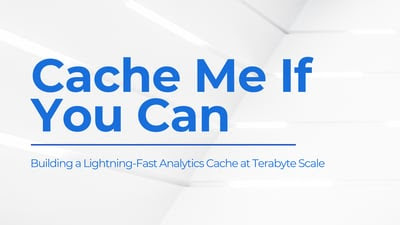Blog

Coupang, a Fortune 200 technology company, manages a multi-cluster GPU architecture for their AI/ML model training. This architecture introduced significant challenges, including:
- Time-consuming data preparation and data copy/movement
- Difficulty utilizing GPU resources efficiently
- High and growing storage costs
- Excessive operational overhead maintaining storage for localized data silos
To resolve these challenges, Coupang’s AI platform team implemented a distributed caching system that automatically retrieves training data from their central data lake, improves data loading performance, unifies access paths for model developers, automates data lifecycle management, and extends easily across Kubernetes environments. The new distributed caching architecture has improved model training speed, reduced storage costs, increased GPU utilization across clusters, lowered operational overhead, enabled training workload portability, and delivered 40% better I/O performance compared to parallel file systems.

Suresh Kumar Veerapathiran and Anudeep Kumar, engineering leaders at Uptycs, recently shared their experience of evolving their data platform and analytics architecture to power analytics through a generative AI interface. In their post on Medium titled Cache Me If You Can: Building a Lightning-Fast Analytics Cache at Terabyte Scale, Veerapathiran and Kumar provide detailed insights into the challenges they faced (and how they solved them) scaling their analytics solution that collects and reports on terabytes of telemetry data per day as part of Uptycs Cloud-Native Application Protection Platform (CNAPP) solutions.
.png)
.jpeg)
Today, we are excited to announce the launch of Non-fungible token (NFT) as a new feature in our leading data orchestration platform.
.jpeg)
With the collaboration between Meta (Facebook), Princeton University, and Alluxio, we have developed "Shadow Cache" – a lightweight Alluxio component to track the working set size and infinite cache hit ratio. Shadow cache can keep track of the working set size over the past window dynamically and is implemented by a series of bloom filters. Shadow cache is deployed in Meta (Facebook) Presto and is being leveraged to understand the system bottleneck and help with routing design decisions.

This blog shares the practice of using Alluxio and Spark to accelerate the auto data tagging system in WeRide, an autonomous driving technology company.
.jpeg)
Alluxio is the data orchestration platform to unify data silos across heterogeneous environments. This is the last article in a series to give you the basics of Alluxio’s architecture and solution.
.jpeg)
This is a tutorial to guide a newbie to complete a new-contributor task and become an open-source contributor of the Alluxio project.
.jpeg)
This article highlights synergy between the two widely adopted open-source projects, Alluxio and Presto, and demonstrates how together they deliver a self-serve data architecture across clouds.
.jpeg)
As data stewards and security teams provide broader access to their organization’s data lake environments, having a centralized way to manage fine-grained access policies becomes increasingly important. Alluxio can use Apache Ranger’s centralized access policies in two ways: 1) directly controlling access to virtual paths in the Alluxio virtual file system or 2) enforcing existing access policies for the HDFS under stores.

Running Presto with Alluxio is gaining popularity in the community. It avoids long latency reading data from remote storage by utilizing SSD or memory to cache hot dataset close to Presto workers. Presto supports hash-based soft affinity scheduling to enforce that only one or two copies of the same data are cached in the entire cluster, which improves cache efficiency by allowing more hot data cached locally. The current hashing algorithm used, however, does not work well when cluster size changes. This article introduces a new hashing algorithm for soft affinity scheduling, consistent hashing, to address this problem.

This blog will introduce how Tencent uses Prometheus and Grafana to set up monitoring system for Alluxio in 10 minutes.
.jpeg)
To provide model training with the best experience, Tencent has implemented a 1000-node Alluxio cluster and designed a scalable, robust, and performant architecture to speed up Ceph storage for game AI training. This blog will give you insight into how Alluxio has been implemented and optimized at Tencent.
.jpeg)
2021 marked accelerated growth for the Alluxio Open Source Project. We could not be more grateful for what the community has achieved together in this past year. This blog provides a glimpse of the year long summary of our community growth.
.jpeg)
This blog is the last one in the machine learning series. Our first blog introduced the what and why of our solution, and the second blog compared traditional and Alluxio solutions. This blog will demonstrate how to set up and benchmark the end-to-end performance of the training process.

.png)